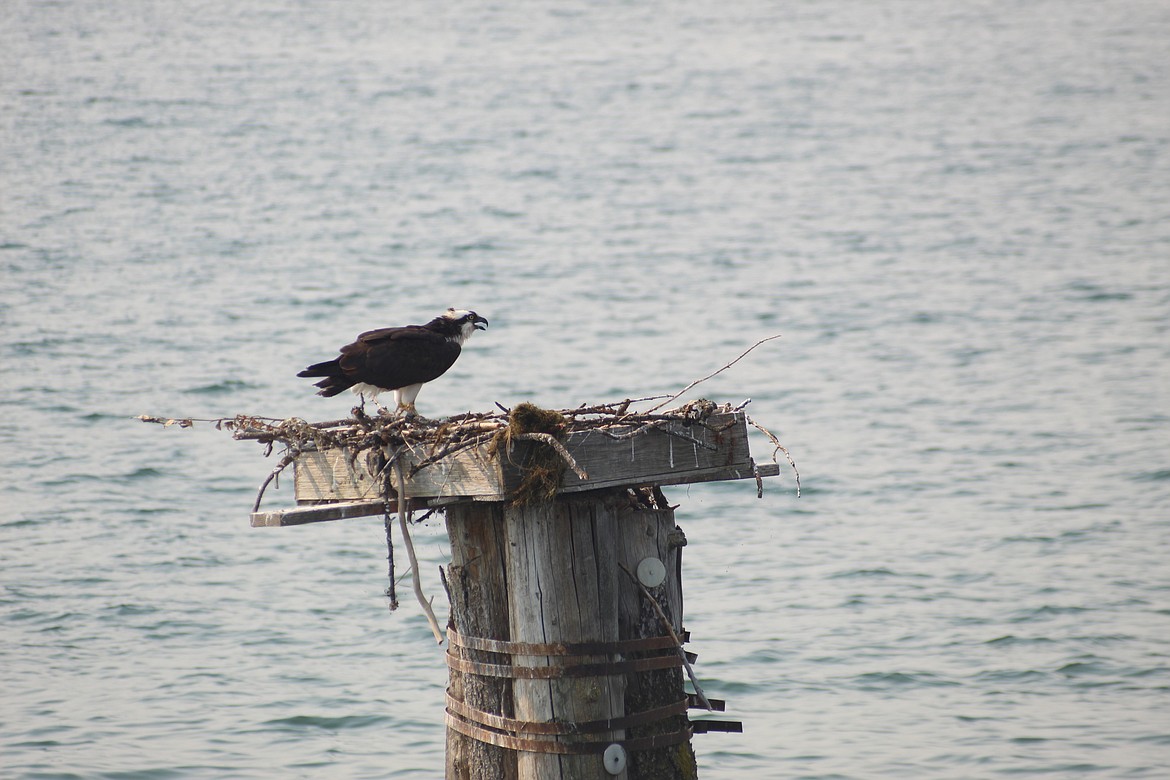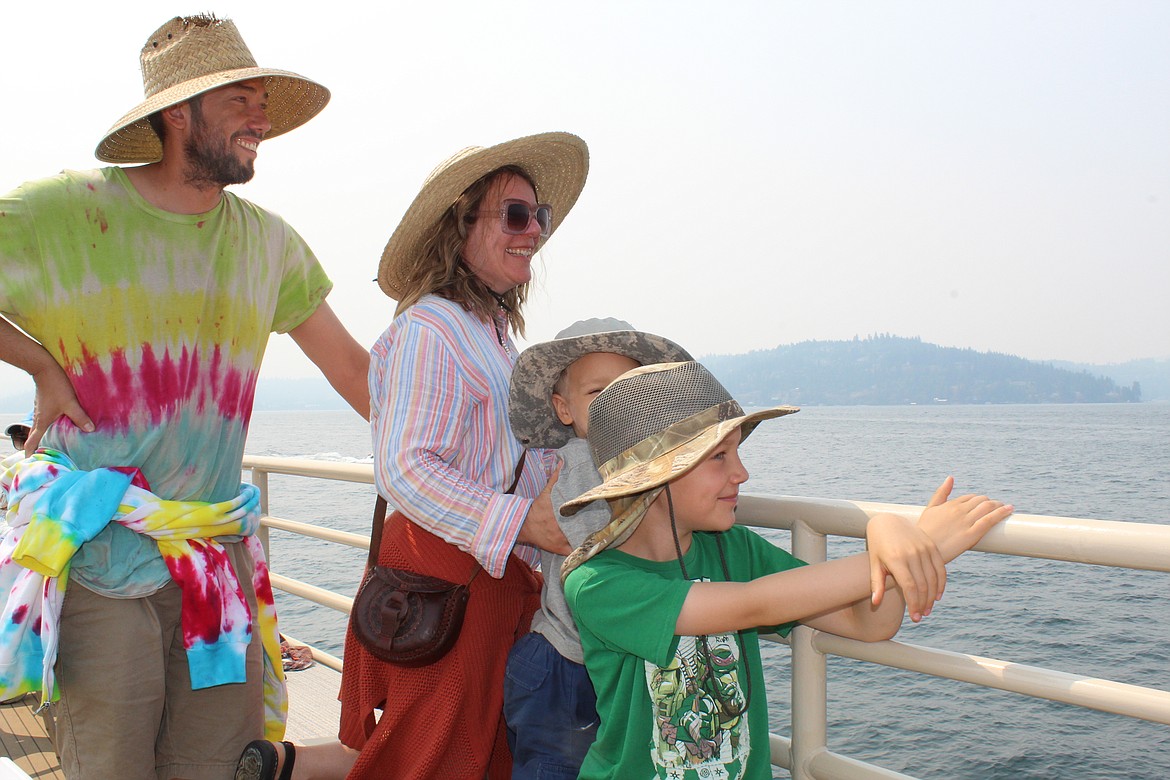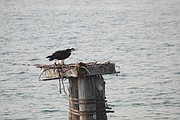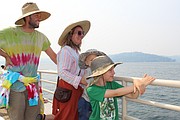Osprey feeling the heat, too
COEUR d'ALENE — With temperatures on the rise and wildfire smoke drifting across Lake Coeur d'Alene, everyone aboard Saturday morning's annual Osprey Cruise noticed the effects of this summer's record-setting heat wave.
It has affected the region's resident raptors, too, as Beth Paragamian and other wildlife and environmental experts discussed with 150 passengers aboard the Lake Coeur d'Alene Cruise boat Mish-an-Nock.
"It's been a very hot year and it's been very hard on the osprey population," said Paragamian, a longtime education specialist with the Idaho Department of Fish and Game. "It's been especially hard on the nestlings."
While one active nest, guarded by a noisy adult osprey, was seen atop a piling in Cougar Bay, and a handful of flying osprey and bald eagles were spotted during the cruise, this summer's stretch of 90- and 100-degree days has hurt the raptor population in several ways.
The heat wave already has warmed the lake's waters to mid- and late-August levels, noted Jim Ekins, area water educator with the University of Idaho Extension office, who also spoke on Saturday's Osprey Cruise.
Ekins noted water temperatures were 78 degrees on Friday at Corbin Park on the Spokane River, meaning the surface temperature of the lake was at least in the mid-70s.
Fish such as salmon, which serve as food for osprey and other raptors, are forced deeper in the water when it warms; they're now found at depths of about 90 feet, said Vaughn Paragamian, retired fisheries biologist with Fish and Game.
That provides fewer chances for osprey to catch them, since they don't dive nearly that far under the water, Beth Paragamian noted.
Tougher fishing isn't the only problem osprey face from the heat, she said.
Young osprey are shielded from the sun by a parent's wing, and their primary source of liquid comes from fish the parents catch. When they overheat or are thirsty, Paragamian said, they jump into the water … but cannot yet fly back up to the nest.
"Those nestlings have to be rescued, and we've had about 30 brought to Birds of Prey (Northwest, a rescue facility in St. Maries)," she said. "Usually the number of rescued nestlings is in the single-digits for an entire summer."
Other annual dangers to young osprey include discarded fishing line, which can ensnare nestlings when they're ready to fly from the nest, and occasionally grabbing too big of a fish with their sharp talons. Although rare, an osprey can be pulled far enough underwater that they drown, Paragamian said.
Her presentation, which included help from several young passengers, featured much to admire about the osprey, a bird of prey native to North Idaho and Coeur d'Alene.
The birds mate for life, and often return to the same nests each spring after the males and females usually depart for separate locations during the winter.
"There's something to be said for that," Paragamian said to chuckles from the passengers.
Rob Bjerke and Maureen O'Connell of St. Maries enjoyed the cruise along with their young children, Hugo and Finn, who stood in as baby osprey while Paragamian described how nestlings are sheltered and fed.
"Seeing the bald eagle," Hugo replied when asked about his favorite part of the cruise.
"Hugo is really into birds, and they both wanted to see osprey. The bald eagles were a surprise," O'Connell said.
Other speakers included Shelley Austin, the recently hired executive director of the Kootenai Environmental Alliance, and Sandy Emerson from the Coeur d'Alene Regional Chamber of Commerce, which sponsors the cruise.
"Every year the cruise is different. Each year has an element that is really interesting," Emerson said of the annual event, which has been held for more than 20 years.
As the cruise neared its conclusion, Emerson pointed out some historical aspects and highlights of the lake's northern shoreline, including Tubbs Hill, the Sanders Beach neighborhood and the Coeur d'Alene Resort Golf Course.





